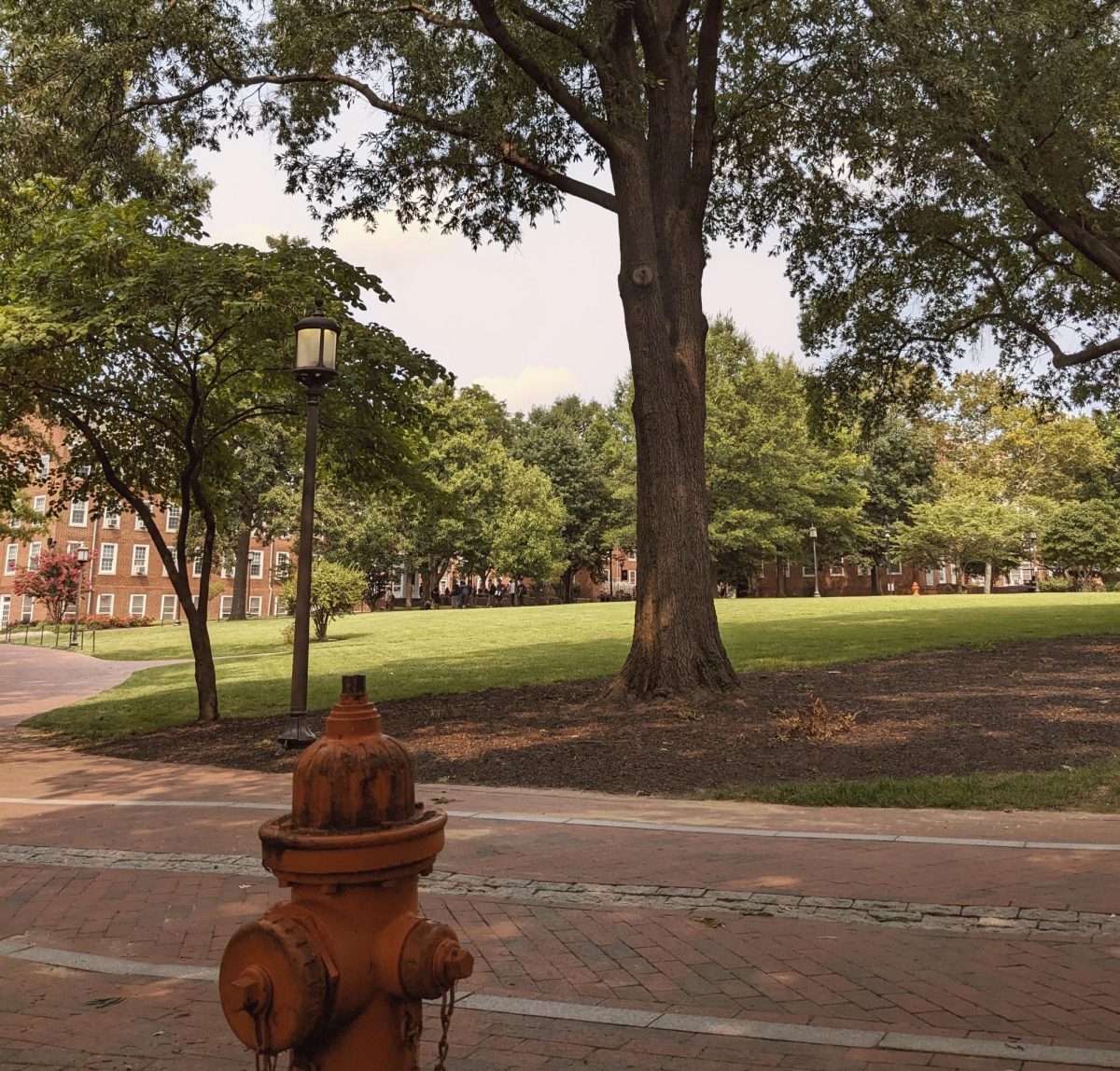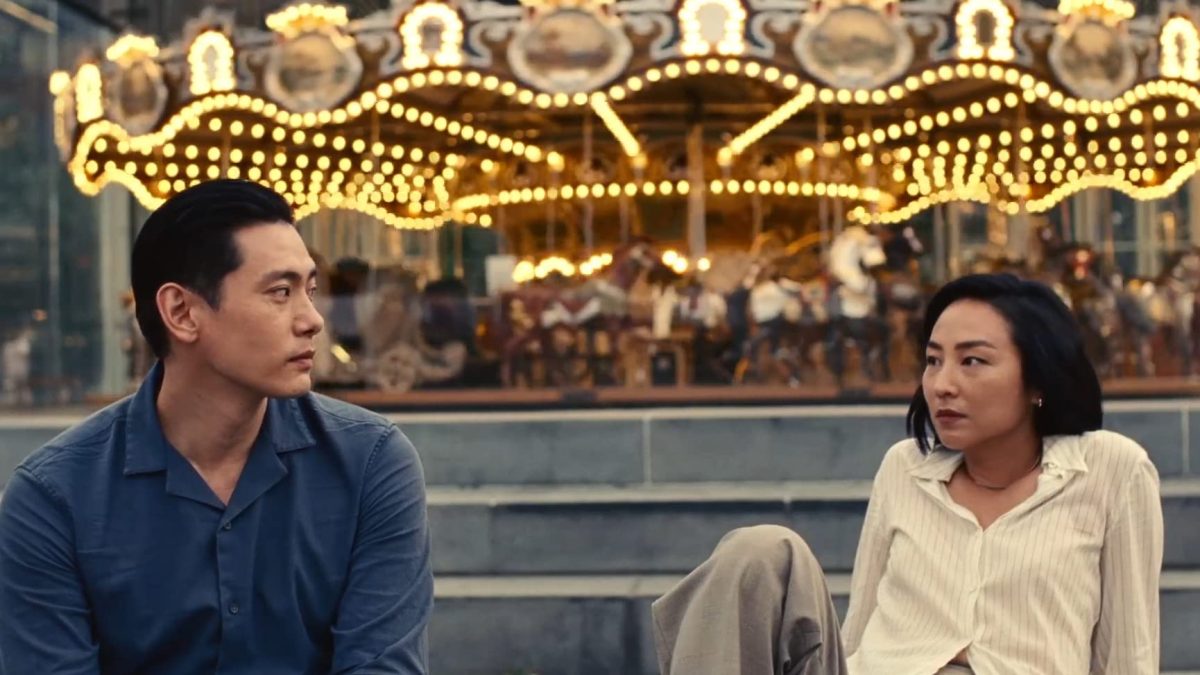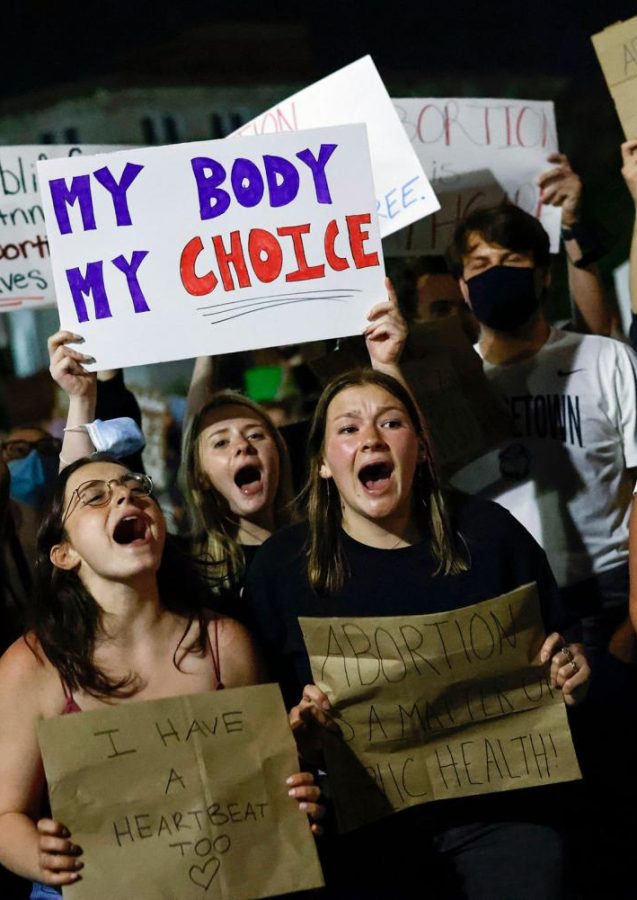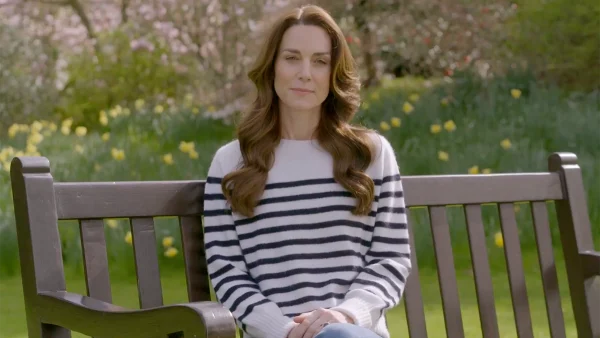A brief overview of the possible Roe v. Wade overturning and how much it will affect
A picture from protests against the overturning of Roe v. Wade which would most likely leave the decision of abortion to the states.
Opinions expressed in editorials on The Central Trend are the view of the individual writer and are not the opinion of the entire staff of The Central Trend or the Forest Hills Central staff or administration.
In 1972, the Supreme Court case of Roe versus Wade was ruled in favor of Roe.
Fifty years later, a Supreme Court “Opinion of the Court” draft was leaked to show that the case could be overturned this year.
In the most basic of explanations, Roe versus Wade was a decision on the legality of a woman’s right to an abortion. Texas resident Jane Roe—which is a name made up in court documents to protect the plaintiff’s identity—filed a lawsuit against Henry Wade, who was the district attorney of the county where Roe lived. She was challenging a Texas law that made abortion illegal unless a doctor ordered the procedure to save the woman’s life. Roe alleged that this law was too vague and infringed on her right to privacy, as protected by the First, Fourth, Fifth, Ninth, and Fourteenth amendments to the Constitution.
When this case was decided, the Supreme Court ruled that the right to privacy was implied by the use of “liberty” in the Fourteenth Amendment and that a woman’s choice to have an abortion is a part of that right to privacy.
This interpretation of the Fourteenth Amendment dates back to Griswold versus Connecticut in 1965 and has been used for many other cases, so why would it change now?
The answer would be that a Mississippi state law is pushing the question of abortion being constitutional. The Mississippi legislature in question would ban abortions after 15 weeks of pregnancy. This limit is well before the point of viability—the point where the ability of the fetus to be able to survive outside the uterus is determined. This point is typically cited as beginning around 23-24 weeks of pregnancy. So the Mississippi law bans abortions before it is determined if the fetus is even able to survive.
When state and national governments interfere with the basic human right of bodily autonomy, they do so in a way that is only affecting women and leave men with the ability to make their own decisions over their bodies.
Unfortunately, if the case is overturned, there is not one guaranteed outcome. However, it would determine that there is no constitutional right to an abortion and would ultimately be up to the states to decide upon. Some states may make abortion more accessible, while others may ban or severely restrict it.
Since abortions are a health-related procedure, it’s not surprising that this will be left to the states to decide. Basic health and safety laws are often left to the authority of the states.
While this is highly common, abortion rights are still very different from other health laws. Abortion rights guarantee a woman the determination of what to do with her own body. When state and national governments interfere with the basic human right of bodily autonomy, they do so in a way that is only affecting women and leave men with the ability to make their own decisions over their bodies.
At this point, since the decision on abortions will most likely be up to the states, it may start to seem unimportant to some. But the ruling on overturning Roe versus Wade could affect so much more.
The right to privacy was what guaranteed a woman’s right to an abortion. The right to privacy also guarantees the right to gay marriage (Obergefell versus Hodges), and interracial marriage (Loving versus Virginia).
In the end, the overturning of Roe versus Wade not only takes away a woman’s right to bodily autonomy but also could raise inquiry about the right to privacy that guarantees other simple rights that should not be questioned.

Kiera is a senior continuing her writing journey with The Central Trend for a fourth, and final, year. Being on staff for the past few years has been one...



























































































Gigi Sinicrope • May 13, 2022 at 8:38 am
and she did what I was unable to do.
Sofia Hargis-Acevedo • May 12, 2022 at 10:24 pm
PHENOMENAL editorial, Kiera!!! I loved hearing your voice in the piece while it also being extremely factual. :)))